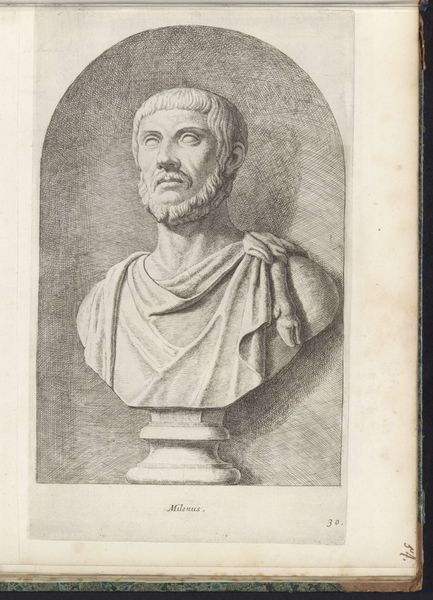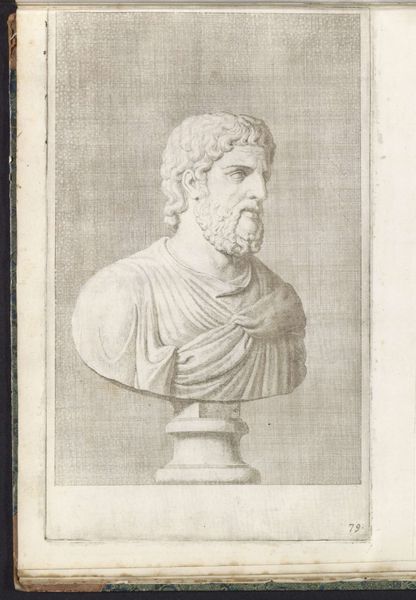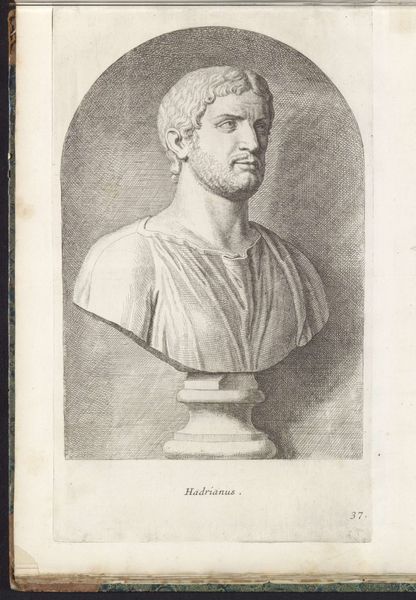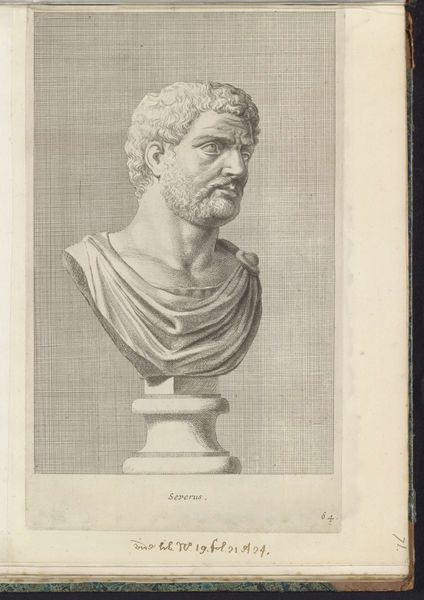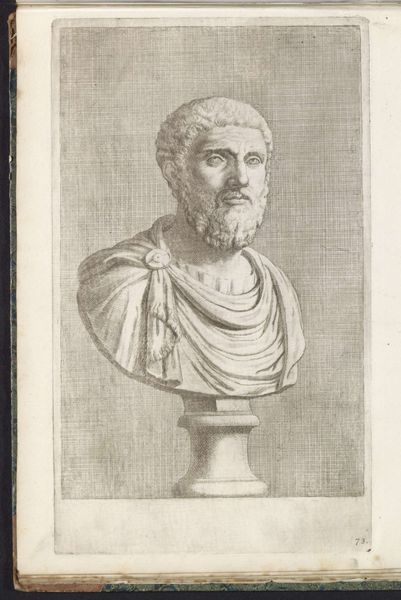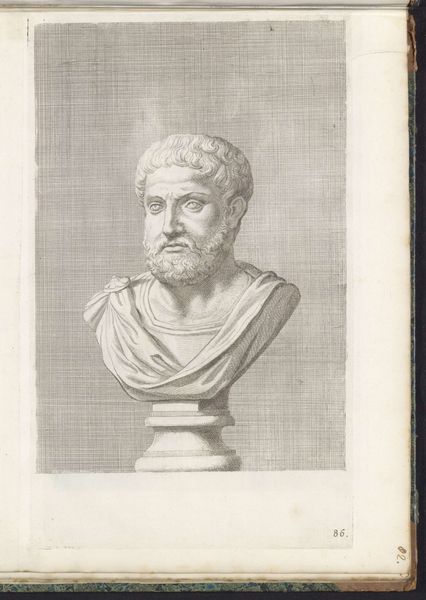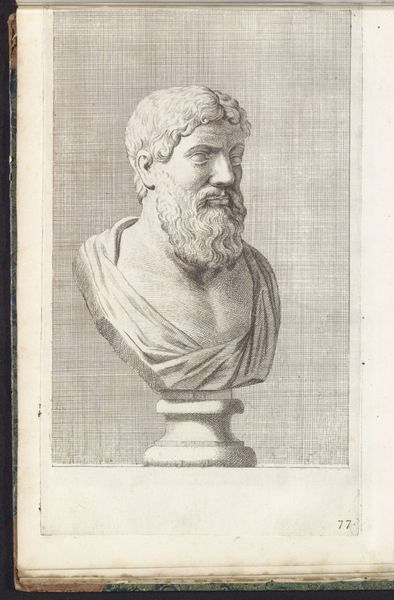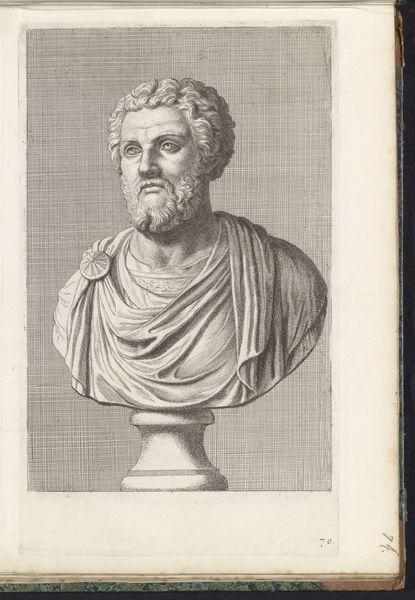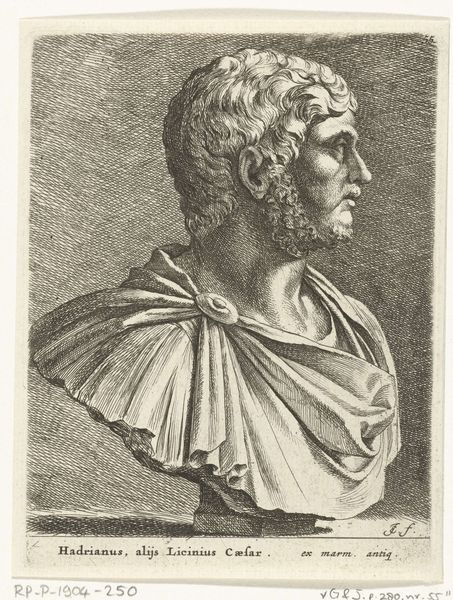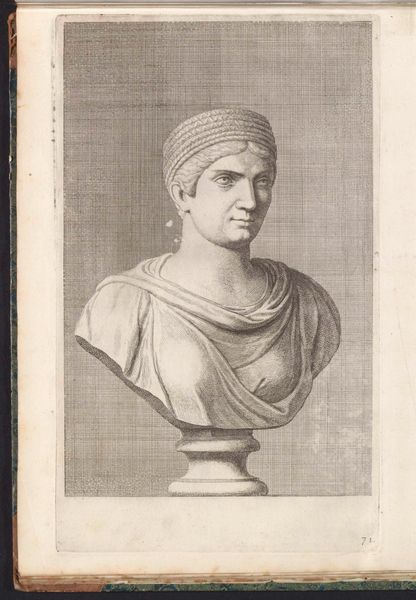
drawing, print, engraving
#
portrait
#
drawing
# print
#
classical-realism
#
figuration
#
ancient-mediterranean
#
history-painting
#
engraving
Dimensions: height 222 mm, width 137 mm
Copyright: Rijks Museum: Open Domain
Editor: So, this is a 17th-century engraving, "Sculptuur van Marcus Mettius". The detail achieved with simple lines is really striking; I'm immediately curious about how the engraver was working and what kind of impact they wanted to have. What do you see in this piece that speaks to its cultural or artistic value? Curator: I see the work as intrinsically linked to its means of production and consumption. The choice of engraving suggests a desire for reproducibility, aligning with the era’s expanding print culture and, with that, an early kind of media consumption. The classical subject matter and style is equally significant – we might think about the print as both a commodity *and* a statement, how these pieces are bound up with a particular history. How would access to something like this engraving shift class dynamics? Editor: So, it's not just about depicting a classical sculpture, but about making that image widely accessible, almost like mass producing art at the time? The material aspect is central to understanding the intention of the artist, perhaps? Curator: Precisely! The availability of this image through the print-making process directly influences its cultural role. It raises questions about who the target audience was. Was it for scholars, collectors, or perhaps a broader public being introduced to classical ideals through such relatively affordable reproductions? Did it impact the sculpture that the engraving tried to depict? Editor: That’s fascinating. Thinking about art in terms of production and access shifts my perspective quite a bit. The focus moves from the individual genius of the artist to the collective labor and societal structures involved in creating and sharing art. Curator: Absolutely. Examining art through a materialist lens, allows us to consider the social life of objects. It makes visible how material and economic forces actively shape artistic expression and reception. Editor: I see that, yes. It's not just *what* is shown but *how* and *to whom* that matters just as much, perhaps even more. Thank you! Curator: My pleasure! It has been a great chance for us both to grow.
Comments
No comments
Be the first to comment and join the conversation on the ultimate creative platform.
